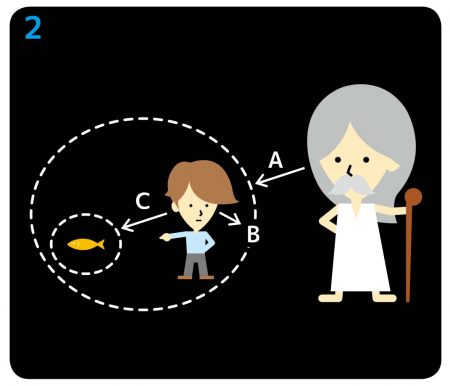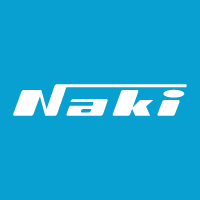 魚器とは / What is NAKI?
魚器とは / What is NAKI?
自分とは何か?
魚器(NAKI)シリーズ
「自分とはなにか?」。この問題に対する宗教的、科学的、芸術的なアプローチを、魚というモチーフで装置化したのが「魚器(NAKI ) シリーズ」です。
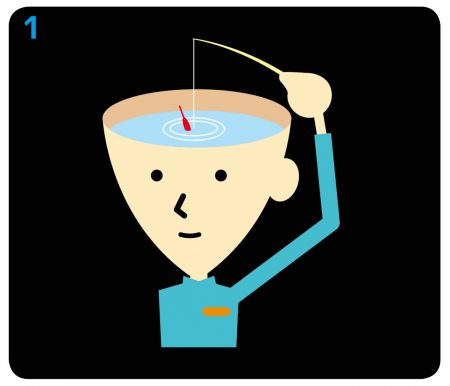
自分とは何か?
このシリーズは1990 年、土佐信道の「自分とはなにか」という個人的な問題から出発しました。この問題をとくため、土佐信道がとった手法は以下です。1 自分を「魚」に、世界を「魚がすむ小さな海」に置き換え、その世界観の中で「自分とはなにか」の答えを発見する。
2 「1アイテム=1メッセージ」をテーマに発見したことをアルファベットの型番をつけて26 個の製品を作る。
3 その結果をざっと眺め、自己の全体像を感じる。
ちょうどそれは釣りに似ています( 図1)。頭の中のカオスという海に泳ぐアイデアという名前の「魚」を、「理性」という釣りのテクニックと,「釣具」という機械工作技術で現実の世界に引っ張り出す。そうやって吊り上げた26匹の魚を分析することで、海の中の世界=自己を理解しようとしたわけです。
魚器シリーズの視点
魚器シリーズを作るに当たって様々な問いが生まれました。「神とは何か?」「世界とは何か?」「モノを作るとはなにか?」、それは「神の視点」、「人間の視点」、「道具の視点」から「自分とは何か?」を考えることです。魚器シリーズは分類すると、大きくこの三つの視点に分かれます( 図2)。A : 神の視点 ・・・水槽の中の魚とそれを眺める人間の関係を「神と人間」に例えて、地球儀のような小さな閉じた世界(=
シュミレーター)を作ったもの。
( 例:ウケテル、タコニワ、聖魚、ハイギョなど)
B:人間の視・・・人間と世界の関係の間に、装置を入れることで、世界の違う見方ができるようにするもの。
(例:ウオノメ、金魚のフン、リングリンなど)
C:道具の視点・・・創造者としての人間が作った道具の中に、神性を込めたもの。魚の造形をした、楽器、武器、家電製品
(例:魚コード、グラスカープ、弓魚など)
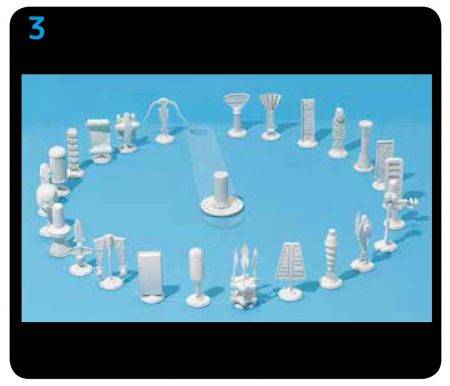
魚器シリーズの展示
魚器シリーズは26 製品あり、A からZ までの「型番」がついています。展示では、A からZ まで円環状に配置されます。これは円の内側が「自分の中の世界」、外側が「自分の外の世界」であり、その境界線上に配置された魚器は「自分の中と外をつなぐインターフェース」という意味を表しています( 図3)。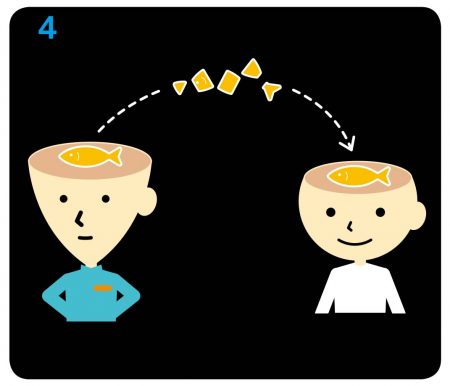
ナンセンスな魚の再構築
魚器シリーズのひとつひとつは、人間というナンセンスマシーンを構成する部品です。このカタログでは解体された魚のようにバラバラの部品で掲載してますが、それを眺めることで再び頭の中に「ナンセンスな魚」が構築され、泳ぎだすことを期待します( 図4)。 What am I?
NAKI series
In the NAKI Series , religious , scientific and artistic approaches to the question ,”What amI ?”, are embodied into devices based on a motif of fish.
What am I?Maywa Denki’s products started with NAKI Series in 1990 when Novmichi Tosa came across the personal question, “Who am I?” He adopted the following methods to try to solve this:
1 Compare oneself to a fish, and the world to a small sea where a fish lives, then, ask oneself “Who am I?” to find the answer from the point of a fish.
2 With the theme of “one item=one message,” create a product to express the answer. Give each one of 26 products an alphabetical model number.
3 Examine the results as a whole and feel the total image of one’s self.
This process is just like fishing(fig.1). The fish (=the idea) swimming in the sea (=chaos in one’s brain) is landed onto the real world with the fishing technique (=reason) and fishing tackle(=mechanical engineering skill). Novmichi tried to understand the undersea world (=himself) by analyzing 26 fishes caught from the sea.
The point of veiw of NAKI Series Various kinds of questions flowed through his mind in the producing process of NAKI Series, such as “What is God”?” “What is the world?” and “What is to produce a thing?” Finding an answer to these led him to create three types of products made from three different points of view(fig.2):
A: God’s point of view: Compare a fish in aquarium to a human being, and a human being to God who is looking at the fish. Make a simulator of closed, small world like a globe.(e.g. Uke-Tel, Tako-Niwa, Sei-Gyo, and Hai-Gyo)
B Human being’s point of view Look at the world from the different angle by putting some device between the relationship of a human being and the world. (e.g. Uo-No-Me, KinGyo-no-Hung, and Ring-Ring)
C Tool’s point of view Instill divinity into a tool made bya human being(=a creator). Form a tool into a fish-shaped musical instrument, a weapon,and electric appliances. (e.g. Na-Cord, Glass-Carp, and Yumi-Na)
NAKI Series exhibit
NAKI Series comprises a total of 26 products , each labeled Model A-Z, displayed here in the round. Those placed inside the circle are “in their own world ,” those outside the corcle are “outside themselves,” and those right on the line are “interfaces between within and without”(fig.3)
Rebuilding the nonsence fishes Each piece of NAKI Series is a component of the nonsense machine called “a human being.” The components in this catalogue are appeared separately one by one as a mutilated fish, however, Maywa Denki wishes that“the nonsense fish” created in one’s own brain begins to swim once again by carefully looking at all 26 nonsense machines.(fig.4)

